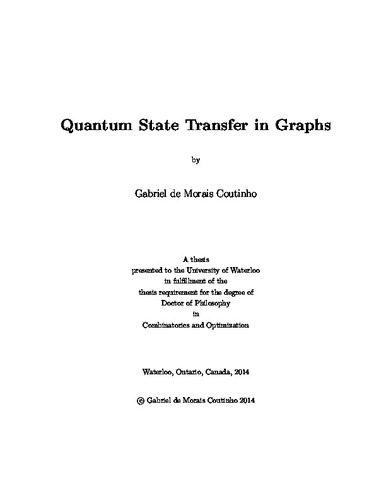| dc.description.abstract | Let X be a graph, A its adjacency matrix, and t a non-negative real number. The matrix exp(i t A) determines the evolution in time of a certain quantum system defined on the graph. It represents a continuous-time quantum walk in X. We say that X admits perfect state transfer from a vertex u to a vertex v if there is a time t such that
| exp(i t A)_(u,v) | = 1.
The main problem we study in this thesis is that of determining which simple graphs admit perfect state transfer. For some classes of graphs the problem is solved. For example, a path on n vertices admits perfect state transfer if and only if n=2 or n=3. However, the general problem of determining all graphs that admit perfect state transfer is substantially hard.
In this thesis, we focus on some special cases. We provide necessary and sufficient conditions for a distance-regular graph to admit perfect state transfer. In particular, we provide a detailed account of which distance-regular graphs of diameter three do so.
A graph is said to be spectrally extremal if the number of distinct eigenvalues is equal to the diameter plus one. Distance-regular graphs are examples of such graphs. We study perfect state transfer in spectrally extremal graphs and explore rich connections to the topic of orthogonal polynomials. We characterize perfect state transfer in such graphs.
We also provide a general framework in which perfect state transfer in graph products can be studied. We use this to determine when direct products and double covers of graphs admit perfect state transfer. As a consequence, we provide many new examples of simple graphs admitting perfect state transfer. We also provide some advances in the understanding of perfect state transfer in Cayley graphs for the groups (Z_2)^d and Z_n.
Finally, we consider the problem of determining which trees admit perfect state transfer. We show more generally that, except for the path on two vertices, if a connected bipartite graph contains a unique perfect matching, then it cannot admit perfect state transfer. We also consider this problem in the context of another model of quantum walks determined by the matrix exp(i t L), where L is the Laplacian matrix of the graph. In particular, we show that no tree on an odd number of vertices admits perfect state transfer according to this model. | en |

